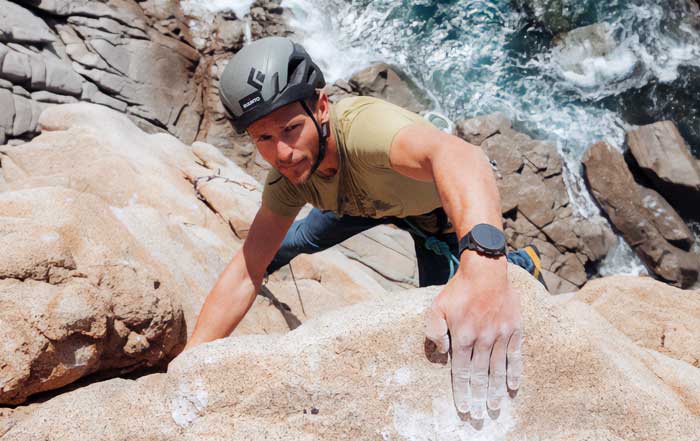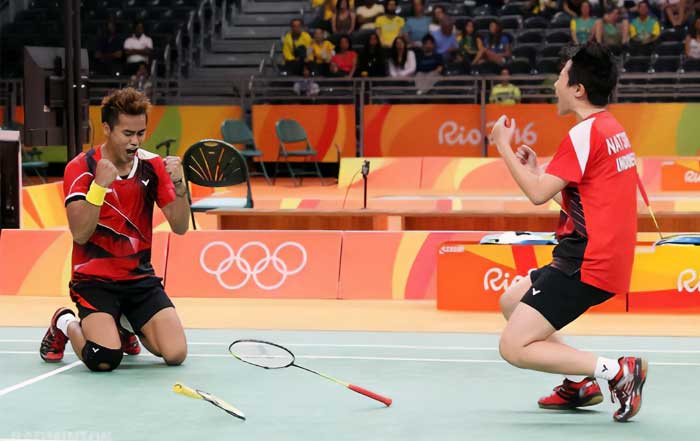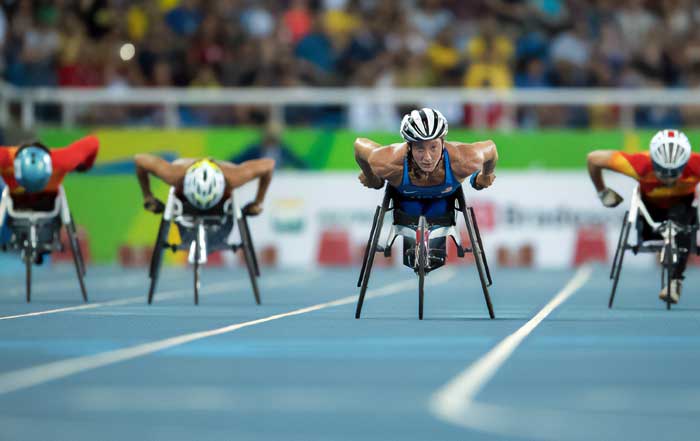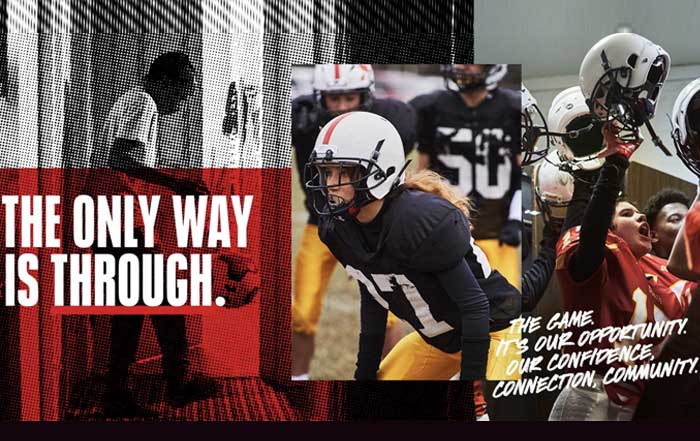Mountain biking has become far more than a recreational pastime. Now it stands as a powerful cultural movement, an expression of freedom, adventure, and physical resilience that connects riders across continents. Trails carved into forests, deserts, and high mountain passes offer an invitation to explore landscapes at a pace that balances human endurance with the rush of gravity. For readers of xdzee.com, mountain biking embodies the perfect intersection of sports, adventure, travel, and global culture, appealing to both casual explorers and professional athletes who see the trail as both challenge and sanctuary.
Across the United States, Europe, Asia, and beyond, communities have embraced mountain biking as a sustainable form of adventure tourism. From the red rock terrain of Moab, Utah, to the alpine trails of Switzerland, the sport fosters deep connections between individuals and their environments while simultaneously driving innovation in cycling technology, safety standards, and outdoor business opportunities. As global tourism adapts to changing consumer behaviors, mountain biking has proven to be one of the most resilient adventure activities, appealing equally to thrill-seekers, families, and those pursuing wellness through active outdoor travel.
The Evolution of Mountain Biking as a Global Sport
The history of mountain biking dates back to the 1970s in California, where pioneers such as Gary Fisher and Joe Breeze began experimenting with rugged bicycles capable of tackling dirt roads and steep descents. Over time, what began as a fringe activity evolved into a structured sport supported by major organizations like the Union Cycliste Internationale (UCI). Today, mountain biking features prominently in competitive cycling, with events ranging from cross-country to downhill, enduro, and freeride formats.
The inclusion of mountain biking in the Olympic Games solidified its legitimacy, showcasing it to audiences who had previously only associated cycling with road racing. At the same time, grassroots participation exploded. Local clubs, riding groups, and community-driven trail-building initiatives created opportunities for riders of all ages to engage with the sport. This democratization of mountain biking ensured that it could be experienced not only in elite competition but also as a daily recreational pursuit for millions worldwide.
As nations recognized its potential to attract tourism, investment flowed into trail networks, bike parks, and destination resorts. Governments in Canada, New Zealand, and Scotland have particularly led the way in positioning their regions as global hubs for mountain biking, linking the sport to wider travel economies.
Iconic Mountain Biking Destinations Around the World
North America: Where Modern Mountain Biking Was Born
The United States remains one of the strongest centers of mountain biking culture. Destinations like Moab in Utah, Crested Butte in Colorado, and Whistler Bike Park in British Columbia, Canada, are regarded as legendary trails every rider dreams of experiencing. Each offers a unique mix of terrain: slickrock formations, high-altitude singletrack, and purpose-built downhill parks that cater to adrenaline enthusiasts.
In Whistler, the scale of the resort has set the gold standard for global bike parks. The integration of ski infrastructure into summer mountain biking tourism has inspired other resorts worldwide to follow the model, combining lift-accessed descents with carefully designed trails for varying skill levels. For riders traveling from across the globe, Whistler has become not only a destination but a rite of passage.
For those interested in North American adventure travel, xdzee.com/adventure.html provides insights into how destinations like these connect extreme sports to broader lifestyle and tourism experiences.
Europe: The Cultural Heart of Trail Development
In Europe, mountain biking benefits from centuries-old trails originally designed for trade, shepherding, or military routes. The Alps stretch across multiple nations and offer some of the most breathtaking and technically challenging trails on earth. Switzerland’s Graubünden region, France’s Les Gets, and Italy’s Dolomites attract both competitive racers and leisure riders.
Germany has embraced mountain biking not just as a sport but as part of its sustainable tourism agenda. The Black Forest region and Bavarian Alps are now home to extensive networks of trails that integrate with cycling-friendly infrastructure such as eco-lodges and public transport links. This reflects Europe’s broader focus on sustainability in adventure tourism, making biking trails not just a playground but also a model of responsible development.
Readers can explore further discussions on global outdoor destinations through xdzee.com/destination.html.
Asia-Pacific: Emerging Frontiers for Adventure
In the Asia-Pacific region, mountain biking has rapidly expanded into countries such as Japan, Thailand, and South Korea. Japan, long admired for its alpine skiing, has begun converting mountain resorts into summer biking parks, particularly in Nagano and Hokkaido. Thailand has emerged as a vibrant hub for downhill and jungle biking, blending trail adventure with the nation’s renowned hospitality and cultural richness.
New Zealand has positioned itself as a leader in the Southern Hemisphere with its world-class trail networks in Rotorua and Queenstown. The government has supported the sport as part of its active tourism economy, ensuring that trails cater to both international travelers and domestic communities.
For those looking to combine sports with lifestyle inspiration in Asia-Pacific, xdzee.com/lifestyle.html dives deeper into how mountain biking intersects with travel and wellness culture.
🚵 Global Mountain Biking Explorer
Discover epic trails around the world
North America
Where modern mountain biking was born
Europe
Cultural heart of trail development
Asia-Pacific
Emerging frontiers for adventure
South America
Rugged landscapes & emerging tourism
Africa
Untapped potential & contrasts
Data compiled from global mountain biking destinations and tourism reports
Technology, Safety, and Innovation in Mountain Biking
As the sport has matured, technological advancements have transformed mountain biking equipment. Carbon fiber frames, hydraulic disc brakes, and advanced suspension systems have redefined what is possible on the trail. The emergence of electric mountain bikes (e-MTBs) has expanded access, allowing riders of varying fitness levels to enjoy demanding terrain without being limited by endurance.
In 2025, innovation is not limited to hardware. Digital platforms like Strava and Trailforks have become essential tools for riders, enabling GPS tracking, route planning, and performance analysis. Virtual coaching programs and AI-driven training apps allow athletes to prepare with precision, bridging the gap between recreational riders and elite competitors.
Safety remains a top priority. Advances in protective gear—such as MIPS-enabled helmets and lightweight body armor—have drastically reduced injury risks. Simultaneously, organizations and governing bodies have emphasized trail safety standards, ensuring that routes are maintained, signposted, and categorized for skill-appropriate use.
Readers interested in the evolving landscape of innovation and safety within extreme sports can explore more through xdzee.com/innovation.html and xdzee.com/safety.html.
The Economic and Business Dimensions of Mountain Biking
The allure of mountain biking trails is not limited to sport and leisure—it also represents a powerful economic engine. Bike tourism generates billions of dollars annually, supporting small businesses such as bike shops, guiding services, and eco-lodges. Entire towns have revitalized their economies by positioning themselves as biking hubs, with Bentonville, Arkansas, standing as a prime example of strategic investment in trail development.
Brands like Specialized, Trek, and Giant have become global leaders in equipment manufacturing, while adventure travel companies have curated luxury biking tours that combine high-end accommodations with world-class trail experiences. The growth of this ecosystem highlights mountain biking’s dual role as both a grassroots cultural phenomenon and a sophisticated business sector.
For more on how global sports and travel industries intersect with economic opportunity, readers can connect through xdzee.com/business.html and xdzee.com/brands.html.
Culture, Lifestyle, and the Human Experience
Beyond the adrenaline and economic value, mountain biking has developed a strong cultural identity. Riders embrace a lifestyle centered on freedom, exploration, and resilience. The community often values inclusivity, with initiatives encouraging women, children, and underrepresented groups to access trails.
The culture extends beyond sport, influencing fashion, media, and even sustainability ethics. Mountain biking apparel has merged performance with style, while documentaries and streaming content bring the stories of riders to global audiences. Meanwhile, the close relationship between bikers and nature reinforces a strong environmental ethic, with many advocacy groups dedicated to protecting the ecosystems in which trails exist.
For an exploration of how sports like mountain biking shape global culture and ethical conversations, xdzee.com/culture.html and xdzee.com/ethics.html provide insights tailored for thoughtful readers.
Mountain Biking in 2025 and Beyond
As global travel resumes full strength, mountain biking stands positioned as a leader in sustainable adventure. Its combination of accessibility, environmental responsibility, and thrilling experience ensures that it will remain one of the most compelling activities for decades to come. Countries across Europe, North America, Asia, and South America are investing in trail development not only for economic return but also for community health and cultural enrichment.
Looking ahead, climate change and environmental challenges will shape the sport, with greater emphasis on trail sustainability, eco-conscious travel, and community-led initiatives. Technology will continue to blur the line between physical sport and digital enhancement, offering riders unprecedented ways to connect, train, and explore.
For readers of xdzee.com, the allure of mountain biking trails lies in their promise: they represent not only physical adventure but also a vision of how sport can unite travel, lifestyle, culture, and global business in a single exhilarating experience.
South America: Rugged Landscapes and Emerging Tourism
In recent years, South America has rapidly gained recognition as one of the most exciting frontiers for mountain biking. Countries such as Chile, Peru, and Brazil offer landscapes that rival the world’s most established biking destinations, but with a cultural and ecological richness that creates an unmatched adventure.
Chile has become a leader in South American biking tourism thanks to its diverse geography. From the Atacama Desert, one of the driest places on Earth, to the lush forests of Patagonia, the trails provide extremes that appeal to riders who seek varied terrain. The annual Montenbaik Enduro World Series hosted in Chile has elevated the country’s global reputation, attracting professional athletes and enthusiasts who wish to test themselves against dramatic Andean landscapes.
Peru blends history and sport, with trails that wind through Sacred Valley and Cusco, offering bikers the rare chance to ride alongside ancient Incan ruins. These routes are not only physically challenging but also deeply cultural, connecting riders to civilizations that thrived centuries ago. Meanwhile, Brazil, with its vast biodiversity and mountainous regions such as Minas Gerais, is gradually becoming a hotspot for both cross-country and downhill biking.
For readers seeking more global adventure opportunities across Latin America, xdzee.com/travel.html highlights destinations where culture, nature, and sport converge.
Africa: Untapped Potential in a Continent of Contrasts
Africa, with its vast deserts, savannahs, and mountainous terrain, holds enormous potential for the future of mountain biking. While not yet as developed as Europe or North America, regions such as South Africa, Kenya, and Morocco have begun to establish themselves as competitive and tourism hubs.
South Africa leads the way with internationally recognized events like the Cape Epic, often described as the “Tour de France of mountain biking.” This multi-day race across the Western Cape challenges athletes with grueling distances, high temperatures, and technical terrain, making it one of the most prestigious endurance competitions in the sport. Beyond professional racing, South Africa also boasts a growing infrastructure of trails near Cape Town and Stellenbosch, catering to recreational riders and tourists alike.
Kenya and Morocco, while in earlier stages of development, are embracing mountain biking as part of eco-tourism initiatives. In Kenya, trails near Mount Kenya and the Rift Valley blend natural beauty with wildlife encounters, creating a riding experience unlike any other. Morocco’s Atlas Mountains offer dramatic high-altitude trails that are beginning to attract global attention.
As mountain biking expands into Africa, it highlights the sport’s ability to diversify tourism economies while supporting conservation and local communities. Readers can explore related discussions on global tourism growth through xdzee.com/world.html.
Competitive Mountain Biking: From Local Races to World Championships
While mountain biking thrives as a recreational activity, its competitive side has elevated the sport’s profile on the international stage. Cross-country (XC) racing, downhill (DH) competitions, enduro events, and freeride showcases each represent different facets of skill and endurance.
The UCI Mountain Bike World Championships and Enduro World Series remain the pinnacle of global competition. These events attract professional athletes from around the world, each pushing the boundaries of what is possible on two wheels. Downhill races, often featuring extreme descents at speeds exceeding 70 km/h, demand precision, bravery, and technical mastery. In contrast, cross-country races test endurance and strategy, with athletes covering long distances over varied terrain.
Freeride competitions such as Red Bull Rampage highlight the creative side of mountain biking, with riders performing gravity-defying stunts on natural terrain. These events not only showcase athleticism but also inspire new generations of bikers, proving that the sport is as much about creativity and expression as it is about competition.
The integration of these competitions into digital platforms has further expanded mountain biking’s global reach. Streaming services and social media coverage ensure that even the most remote races are accessible to global audiences, fueling interest in both participation and tourism. For readers interested in sports evolution and performance analysis, xdzee.com/performance.html provides deeper coverage.
Community Development and Inclusivity
One of mountain biking’s greatest strengths is its ability to create and sustain communities. Across the globe, local clubs and non-profit organizations dedicate themselves to building trails, organizing events, and fostering inclusivity. This grassroots spirit ensures that the sport remains accessible, regardless of age, gender, or socioeconomic status.
Women’s participation in mountain biking has grown significantly, supported by initiatives like Liv Cycling, a brand dedicated exclusively to female riders, and advocacy groups that promote trail access and equal representation in competition. Similarly, adaptive mountain biking programs have made the sport accessible to athletes with disabilities, proving that innovation and inclusivity can go hand in hand.
Youth programs, particularly in the United States, Canada, and Europe, ensure the sport’s future by teaching skills, safety, and environmental stewardship. By engaging young riders, these initiatives foster a lifelong passion for outdoor activity while building resilience, teamwork, and confidence.
The sense of camaraderie within the mountain biking world reflects broader cultural values of adventure and exploration, which align closely with xdzee.com/sports.html coverage on community-driven athletics.
Environmental Impact and Ethical Considerations
With its close connection to nature, mountain biking carries a responsibility to protect the environments where it thrives. Trail development, if poorly managed, can contribute to erosion, habitat disruption, and conflicts with hikers or conservation areas. To address this, organizations such as the International Mountain Bicycling Association (IMBA) have established guidelines for sustainable trail design and maintenance.
In 2025, environmental consciousness is no longer optional—it is essential. Many biking communities worldwide have adopted volunteer-driven trail maintenance days, ensuring that paths remain safe, sustainable, and respectful of local ecosystems. Partnerships between bikers and conservation groups illustrate how adventure sports can align with environmental goals.
Ethical tourism practices are also at the forefront of discussions, particularly in developing regions where trail tourism may affect local cultures and economies. Ensuring that communities benefit economically and socially from mountain biking tourism is vital for long-term success. This aligns with themes covered by xdzee.com/ethics.html, which explores how sports can be both adventurous and socially responsible.
Technology and the Digital Future of Trails
The next decade will see mountain biking become increasingly intertwined with digital tools. Augmented reality (AR) and virtual reality (VR) are beginning to shape how riders plan, train, and even simulate experiences before hitting the trails. Imagine exploring the Alps or Andes virtually before traveling there, gaining confidence and preparation for real-world riding.
Artificial intelligence is also revolutionizing performance analysis. Smart sensors embedded in bikes and gear provide real-time data on cadence, braking, suspension, and rider biometrics. This data helps riders refine their techniques while enabling manufacturers to innovate with greater precision.
Electric mountain bikes (e-MTBs) remain one of the most transformative developments. While some purists resisted their rise, e-MTBs have expanded participation, particularly in regions with older populations or challenging terrains. Their popularity reflects broader technological trends in mobility and outdoor recreation.
For a deeper dive into how digitalization shapes sports, readers can explore xdzee.com/innovation.html.
Careers and Opportunities in the Mountain Biking Ecosystem
Beyond riding itself, mountain biking has generated a wealth of career opportunities. From trail design and construction to event management, guiding services, and brand marketing, the industry provides thousands of jobs worldwide. Engineers and designers push the limits of technology, while professional athletes and influencers shape culture and inspire consumer demand.
Adventure travel companies now employ specialized biking guides who combine technical knowledge with hospitality, ensuring that tourists enjoy safe and unforgettable experiences. Local economies benefit from bike shops, equipment rentals, and eco-lodges that cater to the biking community.
As the sport grows, so too does its intersection with media and business. Social media influencers and content creators document their trail adventures, generating sponsorship deals and brand partnerships. This blend of sport and business mirrors broader global trends in digital entrepreneurship, making mountain biking not just a leisure pursuit but a career path.
For readers interested in how adventure sports translate into professional pathways, xdzee.com/jobs.html provides resources on emerging industries and opportunities.
The Future Outlook: Mountain Biking as a Lifestyle Movement
Looking ahead to the remainder of the 2020s, mountain biking appears destined to continue its ascent as a global lifestyle movement. Its combination of adventure, sustainability, and inclusivity aligns perfectly with the values of modern travelers and athletes. Governments and businesses are investing heavily in trail infrastructure, recognizing the sport’s economic and cultural significance.
The future will likely see more integration of sustainability practices, greater emphasis on diversity in participation, and a blending of physical sport with digital innovation. Mountain biking is not simply about pedaling through rugged terrain—it represents freedom, exploration, resilience, and a deeper connection to both people and planet.
For the global community of readers at xdzee.com, mountain biking’s allure lies in its universality. Whether on the dusty trails of South America, the icy paths of Scandinavia, or the lush forests of Asia, the sport speaks the same language: one of adventure, courage, and the pursuit of unforgettable experiences.








